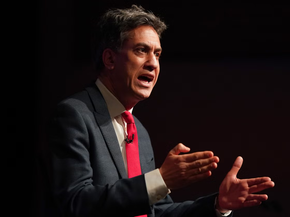Pledges And Targets
Summary table

Paris Agreement targets
India ratified the Paris Agreement exactly one year after the submission of its Intended Nationally Determined Contribution (INDC), on 2 October 2016. Since India did not submit an NDC prior to ratification, the INDC became its first NDC. It includes the following main elements (Government of India, 2015b):
- To reduce the emissions intensity of GDP by 33%–35% by 2030 below 2005 levels;
- To increase the share of non-fossil-based energy resources to 40% of installed electric power capacity by 2030, with help of transfer of technology and low cost international finance including from Green Climate Fund (GCF);
- To create an additional (cumulative) carbon sink of 2.5–3 GtCO2e through additional forest and tree cover by 2030.
India does not specify the coverage and metrics of the emissions intensity target in its NDC. We estimate that achieving its 40% non-fossil capacity target would result in an emissions level of around 5 GtCO2e (385% above 1990 emissions level excluding LULUCF) by 2030. The emissions reduction implied by the NDC non-fossil capacity target are based on developments reflected in CAT’s current policy pathway for India.
Although not stated in the NDC, we assume that the target to create an additional carbon sink of 2.5–3 GtCO2e through additional forest and tree cover by 2030 is cumulative, representing an average annual carbon sink of 167–200 MtCO2e over the period 2016–2030. Over half of this target could be achieved by the Green India Mission, which is expected to enhance annual carbon sequestration by about 100 MtCO2e (Government of India, 2015b).
As the non-fossil generation target is conditional on the provision of resources, the CAT has based its rating on the intensity target. The non-fossil generation target would result in lower absolute emissions than the intensity target alone, effectively leading to a larger reduction in intensity than in the NDC target itself.
2020 pledges
India has pledged to reduce the emissions intensity of its GDP by 20–25% in 2020 below 2005 levels. This target does not cover emissions from the agricultural sector. India proposed the target during the Copenhagen negotiations and submitted it to the Copenhagen Accord on 30 January 2010. The quantification of this pledge covers a range of emissions between 3.7–3.9 GtCO2e in 2020 (excluding LULUCF). These emissions are 2.5–2.7 times greater than 1990 emissions levels.
Long-term goals
In 2007, then Indian Prime Minister Singh pledged that India’s per capita emissions would never exceed those of the developed world. Meeting this pledge does not require any emissions reductions compared to current policy projections up to 2030. While not shown in the figure, we take this pledge into account in the global pathway to 2100 when calculating the rise in global temperature. India’s population is projected to increase by 13% (or 177 million people) from 2016–2030, reaching 1.49 billion people (IEA, 2017b) by 2030. Over the same period, we project per capita emissions to reach around 3.0–3.1 tCO2e per capita (excluding LULUCF) by 2030. Currently, India’s per capita emissions are around 1.8 tCO2e per capita (Andrew, 2018).
Further analysis
Latest publications
Stay informed
Subscribe to our newsletter






